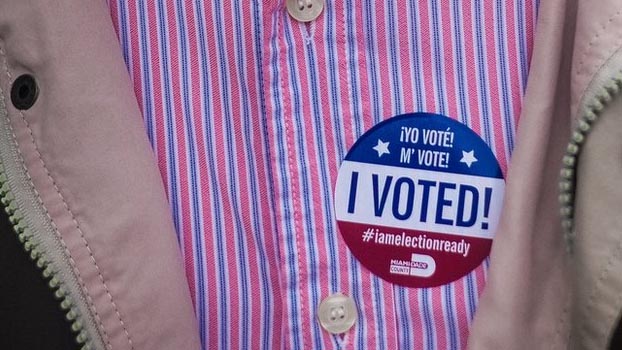US election 2020
How will early voting impact the election?

Early voting is exactly what it sounds like - it's where people are allowed to vote before the scheduled election day, reports BBC.
This can be either in-person at early voting stations, or absentee - that is, by post. In-person early voting is common in Finland and Canada, while Switzerland, Germany and the UK accept postal votes.
In the US, this means people are able to cast their ballots before 3 November - either by post or in-person.
Early voting has steadily increased with each election year. The number of people who voted early in the 2016 presidential election was more than five times the number who voted early 24 years earlier, in 1992.
And with the Covid-19 pandemic affecting everything this year, and some form of early voting under way in all 50 states, we're already seeing record numbers of people casting their ballots ahead of time.
Donald Trump is among those who has voted early. He cast his vote in Florida on Saturday morning.
But the process hasn't been universally popular.
So who is voting early, and why? And what do some people have against it? Here's what you need to know.
According to the US Elections Project, as of 23 October more than 53 million Americans had voted early - either by post or in person. This is already more than the total number of early votes cast in the 2016 election.
This site is run by Michael McDonald, a professor at the University of Florida who specialises in early voting, and tracks the number of votes cast by state and overall.
By his count, the state with the highest number of early voters so far is Texas, where more than 6.3 million people have already voted - for context, that's almost two million more people than voted for Donald Trump in the state in the last presidential election, and just two million away from the total number of votes cast in Texas in 2016.
Texas is followed by California, where more than 5.8 million people have voted, and Florida, which has had more than 4.7 million early voters so far.
The number of people who've voted early so far is also already about 37% of the total number of people who voted in the election in 2016.
As well as knowing where this year's early voters live, we are also now getting a sense of who these voters are.
First of all, we know that a lot of early voters this year are young.
According to the Tufts University Center for Information and Research on Civic Learning and Engagement (Circle), more than three million young people - classified as those aged between 18 and 29 - had cast early votes by 21 October.
About two million of those young votes were cast in 14 battleground states, Circle adds.
Polls have also shown that young voters could turn out in greater numbers this year than in the last election.
In 2016, turnout was just over 46% among 18 to 29-year-olds - while 71% of people older than 65 voted. This year, a Harvard Youth Poll suggests that as many as 63% of people the same age will vote.
More African Americans are voting early this year, too. According to analysis from data firm TargetSmart, more than six times as many black voters had cast early votes by 18 October this year, compared to the same point in 2016.
One overarching reason is the coronavirus pandemic.
The traditional way of voting - thousands of people going to a single polling station on one particular day, queuing with other people for hours, and standing in polling booths that are in proximity to each other - is not particularly conducive to social distancing measures, particularly when not all states have mandated face coverings indoors.
So for this election, at least 30 states have made adjustments to make it easier and more accessible for people to cast absentee votes.
This includes, for example, removing strict requirements for people to have an excuse to have a postal vote, or allowing people to cite their concerns about Covid-19 as their excuse.
Some states have also implemented ballot drop boxes, so people don't have to go to a crowded polling station, or have offered to prepay postage on election ballots that are sent in by post.
Others, such as California and Colorado, have proactively sent all eligible voters mail-in ballots - a practice known as universal mail-in voting.
In North Carolina, the state's board of elections extended the deadline for postal ballots, saying that any ballots received up until 12 November would be counted - as long as they were postmarked on or before 3 November.
Some states have also brought the start date for early in-person voting forward from last year - for example, Texas moved its start date forward by six days, from 19 to 13 October.
Minnesota and South Dakota were the earliest states to begin early voting, with in-person voting starting 46 days before the election.
And while not all states have in-person early voting, those that don't are accepting early mail-in ballots.
Having said that, voting early doesn't necessarily mean voting easily.
In Georgia, for example, thousands of people waited for hours to vote at in-person polling stations.


